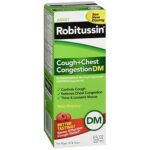Can Dogs Get Cwd
Can Dogs Get CWD? Exploring the Risks and Realities of Chronic Wasting Disease
If you’re a dog owner who loves to hunt or feed your pet with wild game, you may wonder if dogs can get chronic wasting disease (CWD), a contagious neurological disorder that affects deer, elk, moose, and other cervids. While there is no definitive evidence that dogs can contract CWD or transmit it to humans, there are some concerns and precautions you should know about.
To help you make informed decisions about how to protect your dog’s health and safety when hunting or handling potentially infected animals, this article will provide an overview of CWD, its symptoms and causes, the current state of research on dogs and CWD, the regulatory measures in place for hunters and wildlife agencies, and some practical tips for reducing the risks of exposure to CWD.
What is CWD?
Chronic wasting disease is a progressive, fatal brain disease that belongs to a family of diseases called transmissible spongiform encephalopathies (TSEs). It causes abnormal proteins called prions to accumulate in the brain and nervous system of animals, leading to degeneration of tissues and functions. The first case of CWD was reported in captive mule deer in Colorado in the 1960s, and since then it has spread across North America, affecting millions of wild and farmed cervids.
CWD is highly contagious among cervids, meaning that it can be transmitted through direct contact with bodily fluids (such as saliva, urine, feces) or contaminated environments (such as soil, water). It can also persist in the environment for years, making it difficult to eradicate once established. There is no known cure or vaccine for CWD.
Symptoms of CWD in cervids include emaciation, abnormal behavior (such as excessive salivation, head shaking), loss of coordination, and eventually death. However, these symptoms may take months or years to appear, and infected animals can spread the disease unknowingly during the asymptomatic phase.
Can Dogs Get CWD?
The short answer is that we don’t know for sure. While there have been some reports of dogs that showed clinical signs suggestive of CWD (such as neurological deficits) after being exposed to infected cervids or their tissues, these cases are rare and inconclusive. So far, there is no definitive evidence that dogs can contract CWD or transmit it to other animals or humans.
However, this does not mean that dogs are immune to CWD or safe from exposure. Dogs are known to scavenge on carcasses of deer and elk, which may contain prions shed by infected animals. They can also lick contaminated soil or water, or chew on bones of infected animals. In addition, dogs may come into contact with infected cervids through hunting, tracking, training, or other activities that involve close proximity to live or dead game.
Moreover, dogs may serve as potential carriers of CWD prions if they ingest infected tissues and excrete them in their feces or saliva. This could pose a risk to other animals that share the same environment or water sources. Therefore, it is important to take precautions when handling cervid carcasses or parts in areas where CWD has been detected or suspected.
What Does Research Say About Dogs and CWD?
Despite the lack of conclusive evidence on whether dogs can get CWD, there have been some studies conducted on this topic. Most of these studies focused on experimental infection of dogs with CWD prions in laboratory settings, rather than natural exposure in the wild.
Overall, the results of these studies suggest that dogs may be resistant to CWD infection at low doses but susceptible at high doses. The incubation period for CWD in dogs appears to be shorter than in cervids but longer than in other TSEs like scrapie or bovine spongiform encephalopathy (BSE). The clinical signs of CWD in dogs may vary depending on the route and dose of exposure, but can include ataxia, tremors, behavioral changes, and weight loss. However, these signs are not specific to CWD and could be caused by other diseases or factors.
It is worth noting that most of these studies have some limitations and uncertainties, such as small sample sizes, artificial exposure routes or doses, different dog breeds and ages, and lack of long-term follow-up. Therefore, more research is needed to determine the true risk and impact of CWD on dogs.
What Are the Regulatory Measures for Hunting and Wildlife Agencies?
To prevent the spread of CWD among cervids and reduce the potential risks to humans and domestic animals, many states and provinces have implemented regulations for hunting and wildlife management. These regulations may include mandatory testing of harvested deer or elk for CWD, restrictions on transporting carcasses across state lines or borders, bans on feeding or baiting cervids in certain areas, and educational campaigns for hunters and the public.
In addition, some agencies have issued guidelines or recommendations for handling potentially infected game or carcasses. These guidelines may include wearing gloves and masks when field dressing animals, avoiding cutting through bones or spinal cord tissues, minimizing direct contact with fluids or organs, disinfecting tools and surfaces after use, and washing hands thoroughly with soap and water.
It is important to follow these regulations and guidelines to help prevent the spread of CWD and protect yourself and your dog from potential exposure. Failure to comply with these rules could result in legal penalties or fines.
What Can You Do to Reduce the Risks of Exposure to CWD?
While there is no foolproof way to guarantee that your dog will never get exposed to CWD while hunting or living in areas where infected cervids are present, there are some practical steps you can take to minimize the risks:
– Know the areas where CWD has been detected or suspected, and avoid hunting or feeding your dog in those areas if possible.
– Test harvested deer or elk for CWD before consuming or handling them. If a deer or elk tests positive for CWD, do not feed it to your dog or let your dog scavenge on its remains.
– Wear gloves and masks when field dressing animals, and avoid cutting through bones or spinal cord tissues. If possible, use a saw rather than a knife to minimize exposure to prions.
– Minimize direct contact with fluids or organs when handling game, and disinfect tools and surfaces after use. Use disposable wipes or bleach solution to clean knives, saws, and other equipment that may have come into contact with infected tissues.
– Wash hands thoroughly with soap and water after handling game or carcasses, and avoid touching your face or mouth while hunting. Use hand sanitizer if soap and water are not available.
– Supervise your dog closely when hunting or scavenging on game, and discourage him from chewing on bones or licking soil that may be contaminated with prions.
– Monitor your dog’s health regularly, and seek veterinary advice if he shows any signs of neurological problems, weight loss, or behavior changes.
By taking these precautions and being aware of the potential risks of CWD, you can help keep your dog healthy and happy while enjoying the outdoors. Remember that hunting is a privilege, not a right, and that responsible hunters and pet owners have a duty to respect wildlife and protect public health.



